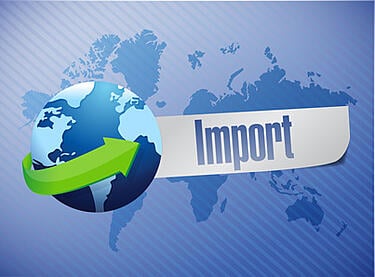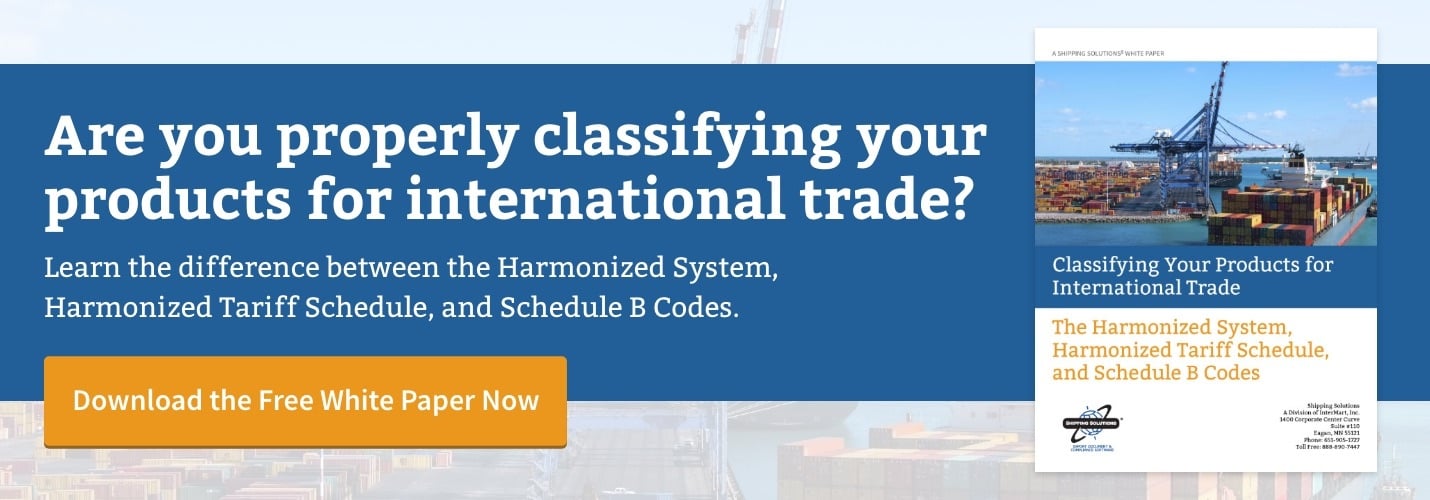The International Trade Blog Import Procedures
What Is an Assist?
On: July 21, 2002 | By: Hank Selby | 5 min. read
 In an earlier article (Everything has a Value—to U.S. Customs), I stated that the value of any type of assist must be added to the transaction value of imported merchandise in order to obtain the correct value for customs duty purposes.
In an earlier article (Everything has a Value—to U.S. Customs), I stated that the value of any type of assist must be added to the transaction value of imported merchandise in order to obtain the correct value for customs duty purposes.
I went on to say that this was an extremely complicated subject. In fact, the whole subject of assists is so complicated that they are the first subject covered in the official Customs Valuation Encyclopedia.
So, although I will discuss this subject in some depth in this article, be forewarned that if you think you may have to declare an assist, you may need to consult some of the references found at the end of this article.
What Is an Assist?
In basic terms, an assist occurs when an importer of foreign merchandise provides something of tangible value to the producer or supplier of that merchandise. The effect of providing this something makes the cost of production less than what it would have been had the producer obtained the something from third-party sources.
When an importer provides an assist, the invoice value of the merchandise coming into the United States doesn’t reflect the value of the assist. From a U.S. Customs and Border Protection (CBP) point of view, this reduces the invoice value of the import. In cases where duty is figured on an ad valorem basis—that is, where the duty is a percentage of the invoice value—it reduces the revenue of the United States. That is not acceptable to CBP!
An assist can take many different forms. In fact, there are many assists that are not immediately obvious to an uninformed importer. This is the main reason that CBP devotes 40 pages to assists in the Customs Valuation Encyclopedia.
Perhaps the best way to illustrate the different forms of an assist is to provide some examples:
Example 1
The simplest example is when a U.S. importer sends some U.S. material abroad for processing.
Let’s say an importer sends reels of hose to Mexico where the producer cuts them to length, adds end connections, and packages them in retail cartons. Since the producer only invoices the importer for the cutting, packaging and connection parts, then the importer must add the value of the hose supplied to the Mexican processor when he receives the invoice(s) at the time of importation.
Example 2
A slightly more complicated example is when items such as tools, dies or molds are supplied to an overseas processor. If a toy importer sends toy molds to a Taiwanese manufacturer, then those molds constitute an assist. The importer must add the value of that assist to the invoice(s).
Example 3
If an importer supplies materials to a foreign producer that are consumed in the production of imported merchandise, then that constitutes an assist.
An example of this would be chemicals that clean metals in the final stage of production. Although those chemicals never return to the U.S., they are essential to the manufacturing process and add value. Therefore they constitute an assist and must be added to the invoice(s).
Example 4
Hardest to conceptualize is the situation where engineering, design, artwork, etc., is produced outside the United States and is used to produce imported merchandise. When an importer pays Company X to produce drawings used by Company Y to produce merchandise for importation into the U.S., the value of those drawings is considered essential to the production and must be added to the invoice(s) upon importation.
Two aspects of this example throw people: first, the work was paid for separately and then is taxed again (this seems to be almost a double payment); second, this only applies to work undertaken outside the U.S. If the artwork or other materials is contracted and paid for inside U.S. customs territory, it is not dutiable.
Here’s another difficult concept: Even when an import is duty free, the value of any assist must be declared upon importation!
Under the concept of informed compliance, it is the importer’s responsibility to make sure that all imports are correctly valued. This is true even when items are duty free.
When you consider that Canada and Mexico are our number one and two trading partners, and that the majority of goods are duty-free, you can see that this would have an impact if assists were not declared. If assists were undeclared on duty-free entries, then the value of U.S. imports would be severely understated.
How Are Assists Valued?
This is where the subject of assists gets really complicated! The basic rule for determining the value of any assist is that it must be based on objective and quantifiable data. In other words, when the assist is declared, the importer must be able to show Customs, upon request, the method used to determine the value of that assist.
Here are a few examples based on the types of assists described above:
Example 1
For the hose sent to Mexico, the value of the assist would generally be the fair market value of the hose in its exported form, plus the transportation costs required to send it to the Mexican processor.
Example 2
For the molds sent to Taiwan, the value of the assist is generally considered to be the cost of producing the mold including the design and development costs.
Example 3
For the chemicals used in metal cleaning, the assist would be the cost of acquiring the chemicals and the transportation cost needed to send them to the overseas processor.
Example 4
For engineering, artwork, etc., if it is undertaken specifically for a certain production run, it is the cost of that particular artwork. The situation gets much more complicated when this artwork or other materials is produced as part of a larger contract with an overseas firm. In that case, the accounting becomes very complicated. This is a case where your accountants will have to consult the resources listed at the end of this article.
How Are Assists Declared?
Generally speaking, assists must be apportioned in accordance with Generally Accepted Accounting Principles (GAAP). In cases where the entire value of the assist is for a single importation into the U.S., the entire assist is declared on that importation. In cases where it is for several importations, it can be declared on the first importation (except when the import is duty free!), or it can be prorated over all the imports.
In cases where the total volume of imports is unknown when the importation begins, then a method of apportionment must be decided upon and followed until the entire value of the assist has been declared. As with valuing the assist, the method of apportioning the assist must be legally correct and must be available to Customs upon request.
The subject of apportionment of assists can get very complicated. If you have a situation where the method of apportionment is not as clear as the examples described above, your accountants will have to become involved.
If the subject of assists is new to you, or if you have never discussed assists with your broker, then I strongly recommend that you go back and take a look at your imports over the last five years to determine if you have undeclared assists. If you find that you do, you will have to determine the value of these assists and make a disclosure to CBP accompanied by a check for the duties that would have been due on those assists.
About the Author: Hank Selby
Hank is manager of international logistics and compliance at Reynolds/Pactiv.




